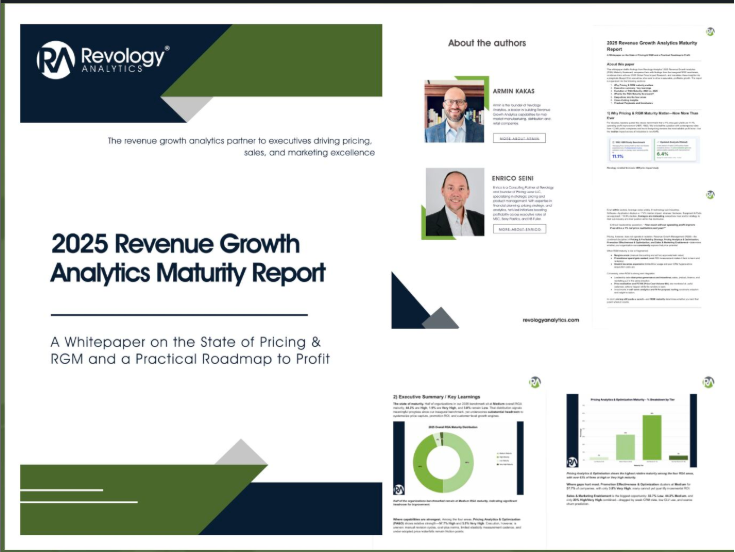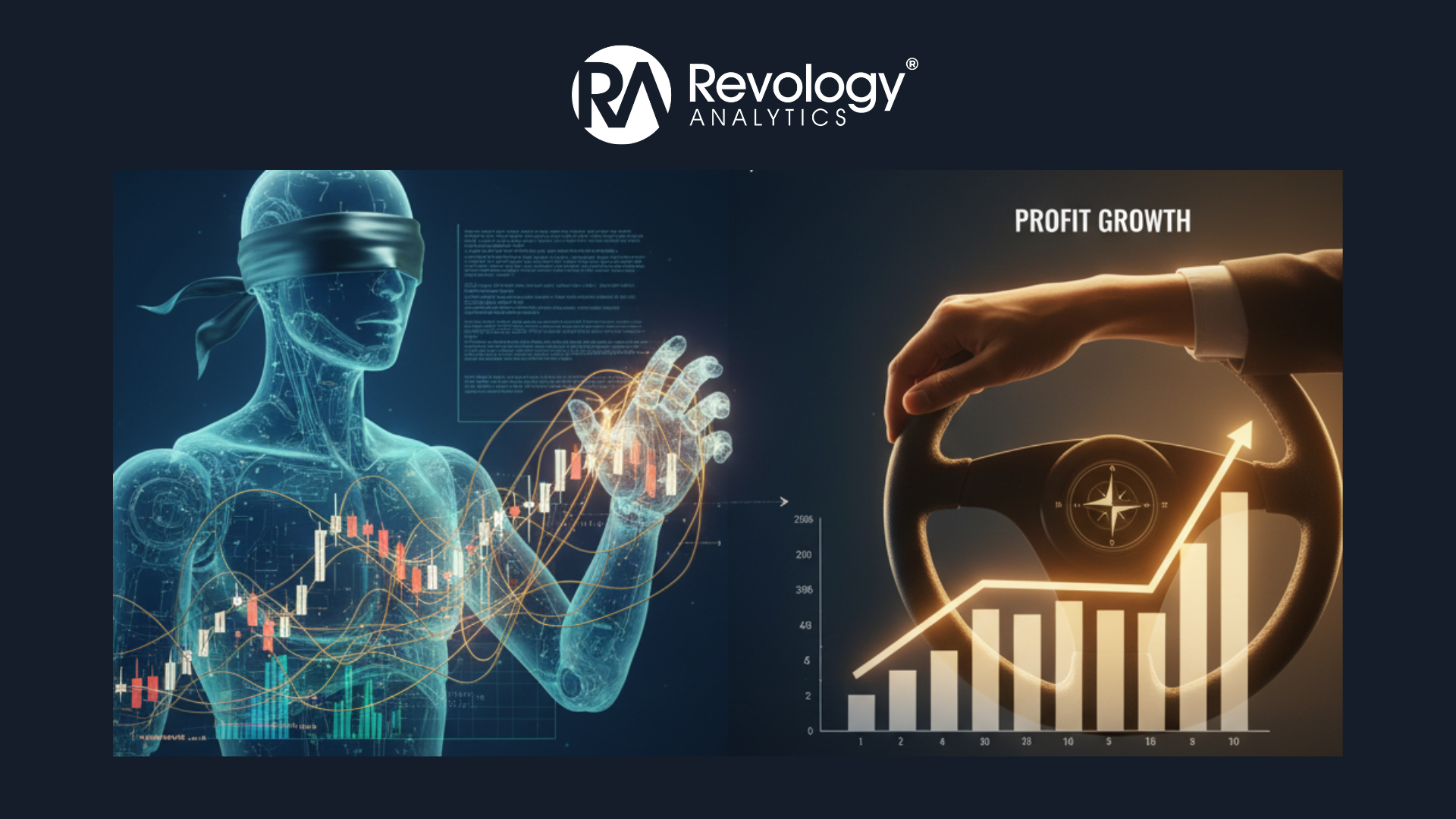AI Won’t Fix Your Pricing Strategy. This Will.
Mid-market firms need to build a human-led, AI-enabled pricing capability.
Every industrial executive knows that pricing packs a punch – in manufacturing sectors, a mere 1% improvement in net price can boost operating profit by around 9% (on average, based on our recent global research of 2,000 publicly traded companies).
I’ve spent most of my career leading pricing and analytics transformations, and now I partner with mid-market CEOs to build in-house Revenue Growth Analytics capabilities. I love the analytical power of a well-deployed algorithm. But here’s the hard truth: a fancy AI pricing model will never substitute for a sound pricing strategy and strong execution.
A flawed narrative is seducing B2B manufacturers and distributors: the idea that your “pricing problem” can be solved simply by buying a sophisticated AI tool.
It’s an appealing illusion of innovation (much like what we’ve seen with the “data science hype” in the prior decade – a glossy, happy-path promise that ignores the gritty realities of data and execution. Leaders see a shiny black-box solution and hope for a magic button to higher margins, even as the underlying causes of margin leakage remain untouched. No wonder most analytics transformations fail to deliver real ROI – by some estimates, fewer than 1 in 5 companies fully extract value from their data initiatives, and the same is true with “AI Transformation” initiatives.
In my experience, two organizational pitfalls kill nearly every such initiative before it begins: The Algorithm Mirage and Strategic Surrender.
The 2025 Revenue Growth Analytics Maturity Report by Revology Analytics - get a free copy for your organization.
Why You Should Never Outsource Your Strategy to an Algorithm
The Algorithm Mirage: This is the trap of chasing a technical solution for what is fundamentally a strategic and data problem. Companies feed messy, incomplete data into a black-box model and expect miracles. In reality, today’s “AI pricing” is mostly just predictive analytics and optimization with a new label – for most B2B environments, this means great at automating up to 70-80% of transactional price decisions, but not at defining your strategy. Without clean, reliable data, even the fanciest model will spit out garbage (indeed, years of data cleansing often precede any useful AI output, and market context still requires human interpretation). Executives who think an algorithm alone will find hidden profits are chasing a mirage.
Strategic Surrender: Perhaps even more damaging is when leadership abdicates their pricing strategy to the algorithm altogether. Seduced by the promise of “AI magic,” they avoid the hard work of clarifying their customer segmentation, value proposition, and pricing guardrails.
The result?
They let a tool optimize a reality that no one has truly defined internally. This is strategic surrender – assuming the algorithm knows best while your own teams lack a coherent strategy to guide it. It’s like handing the steering wheel to a GPS with no destination input. Little surprise that hype hasn’t translated into big wins: in 2025, only ~6% of companies are using AI for advanced pricing insights, and the overall market has seen no broad leap in pricing effectiveness from these investments (based on Revology’s 2025 Revenue Growth Analytics Maturity Research Report).
Buying tools alone hasn’t moved the needle because foundational strategy, talent, process, and adoption remain the bottlenecks. In fact, manufacturing and distribution companies often lag behind other industries in these very fundamentals – e.g. two-thirds of manufacturers rank at low maturity in sales & marketing analytics enablement. The lesson is clear: you cannot outsource your pricing strategy to an algorithm and expect to win.
A Proven Process for Pragmatic Execution
For mid-market companies, chasing the “perfect AI pricing tool” is putting the cart before the horse. Fancy algorithms don’t create strategy – pragmatic execution and intellectual rigor do. In our work, sustainable success comes from following a proven process that blends expert guidance with your team’s hard-won domain knowledge. It comes from nailing three non-negotiable fundamentals before you even think about AI optimization:
Build the Foundation First: Before you dream of dynamic pricing or machine learning, ensure you have a rock-solid data foundation. Start with full price waterfall and profit leakage analysis to understand where your revenue is really coming from (and where it’s leaking). Shockingly, over half of companies have never built a proper price waterfall – they lack a single source of truth on transactions, discounts, rebates, and margins. Don’t expect an AI to magically do this for you. In our engagements, a foundational “Build” phase comes first: we consolidate disparate data into one transparent view of your pricing and profitability. By mapping your true net pricing and margin leakages, you create the context in which any algorithm can actually be useful. An AI model is useless on a flawed foundation, so fix the data and process basics early. Garbage in, garbage out.
Craft a Human-Led Strategy: An insight is worthless without a strategy to act on it. Any AI recommendations must be guided by your business strategy and pricing logic – the model won’t invent those for you. That’s why our approach is expert-led and collaborative. In the “Craft” phase, we co-design a pricing strategy with your leadership team before any advanced tooling comes into play. The goal isn’t to have an algorithm decide the “right price” in a vacuum; it’s to equip your decision-makers with better tools to execute their deliberate strategy. We define clear guardrails: for example, which customers or segments get what pricing approach, what floors and ceilings apply, and how we’ll measure success. Without human judgment, even a smart algorithm can run amok – following competitor price drops off a cliff, for instance, if you don’t give it strategic guardrails (indeed, blindly following AI-generated competitor pricing can destabilize markets. By contrast, when you set the vision, AI becomes a helpful partner rather than a loose cannon. The conversation shifts from “What does the AI tell us to do?” to “How can AI help us do what we want to do – faster and smarter?”
Enable Your Team to Win: The final (and often hardest) mile is ensuring your people can actually execute and sustain the pricing improvements. A new analytics tool or AI-driven price recommendation is worthless if your sales reps and managers don’t trust it or know how to use it. That’s why we emphasize Capability Transfer in the “Enable” phase. We invest in training, playbooks, and change management to turn your commercial team into confident, in-house analytics champions. Your salespeople must understand how a recommended price was calculated and why it makes sense – because at the end of the day, AI suggests prices; sales teams must defend them. This human-in-the-loop approach builds confidence and accountability. We often conduct live coaching with sales on negotiation using the new tools, establish governance (e.g. a Pricing Council), and set up ongoing analytics refreshes. By the end of a 120-day sprint, your organization isn’t dependent on us or on a black box – you’ve built a self-sufficient pricing engine and a team that knows how to run it. This is the difference between building a capability versus installing a temporary gadget.
Build a Capability, Not a Crutch
The primary goal in leveraging AI for pricing is to establish a proactive, in-house capability that enhances your entire organization's intelligence and agility. AI is just one enabler of that capability – it is not a crutch to lean on instead of developing your people and processes. The most important question for a mid-market manufacturer or distributor to ask is not “Which AI pricing software should we buy?” but “How do we cultivate a lasting, human-led, data-driven decision-making culture?”
This question is at the core of every one of our engagements, and it should be at the forefront for any executive serious about achieving profitable growth. Focus on what endures: your team’s skills and confidence, your pricing processes and governance, and a culture of insight-driven action. Use technology as a tool – a force multiplier – not a substitute for thinking. Remember, price is a number, but pricing is MUCH more than that. You must design and build that architecture with your people.
In practice, this means developing your pricing strategy and data foundation in tandem, applying AI tactically (not magically), and continually training and empowering your team. Do this, and the next time an AI model flags an opportunity, your organization will be ready to seize it – with eyes wide open and hands firmly on the wheel of your pricing strategy. That is how mid-market leaders can harness AI in pricing without losing control of their destiny.
Shifting from long-term AI goals to short-term value is possible. With Revify Analytics, we leverage Machine Learning to generate valuable insights quickly. Understand our approach here.
Subscribe to
Revology Analytics Insider
Revenue Growth Analytics thought leadership by Revology?
Use the form below to subscribe to our newsletter.


